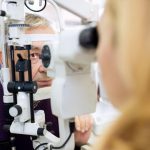
Social media platforms are spouting a steady stream of unsafe skin care trends, according to the American Academy of Dermatology. This is National Healthy Skin Month, and board-certified dermatologists are putting a spotlight on five unsafe practices you might come across while perusing social media. Performing cosmetic treatments at home People are microneedling, injecting fillers and using lasers to remove unwanted hair in videos taken at home. “This is something I find really concerning,” said Dr. Sara Moghaddam, a board-certified dermatologist in Selbyville, Del. “For example, at-home microneedling, also known as derma-rolling, is dangerous due to risk of infections and improper techniques.” Dr. Oyetewa Oyerinde, an assistant professor of dermatology and director of the Skin of Color Clinic at Baylor College of Medicine in Houston, warns that an unsafe cosmetic procedure can look perfectly harmless on someone’s social media platform. “My patients will see people who document their entire experience performing a cosmetic procedure on TikTok or on Instagram,” Oyerinde said. “I tell patients, even if their immediate effect looks good to you — and they may be using filters and other things to make it look good — you have no idea if they ended up in the emergency room afterward because of a bad reaction.” Trying nasal tanning spray Self-tanner applied to the skin is a safe way to gain a lovely glow,… read on > read on >
























-300x200.jpg)













